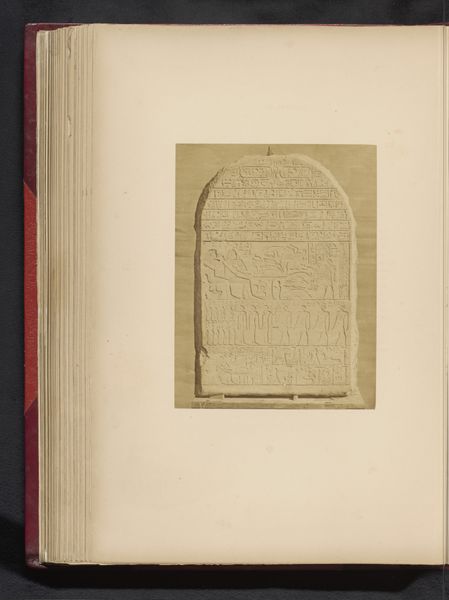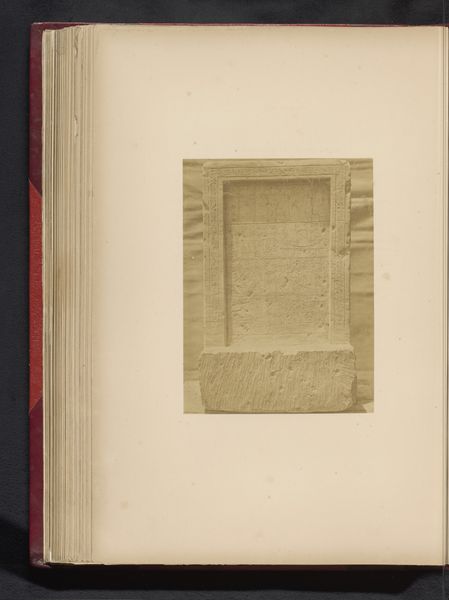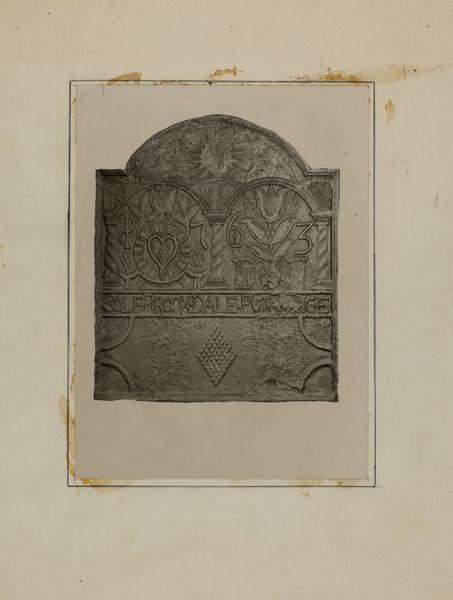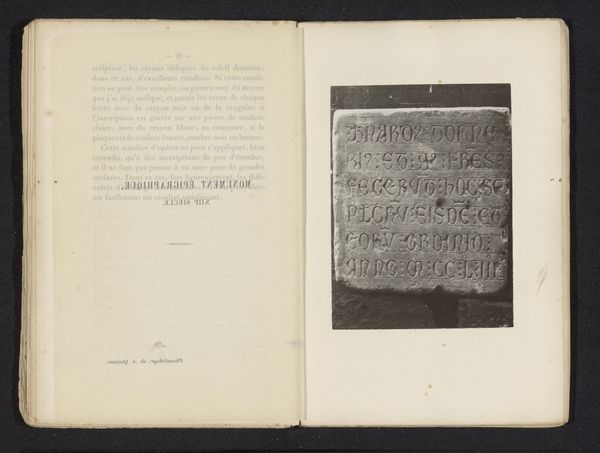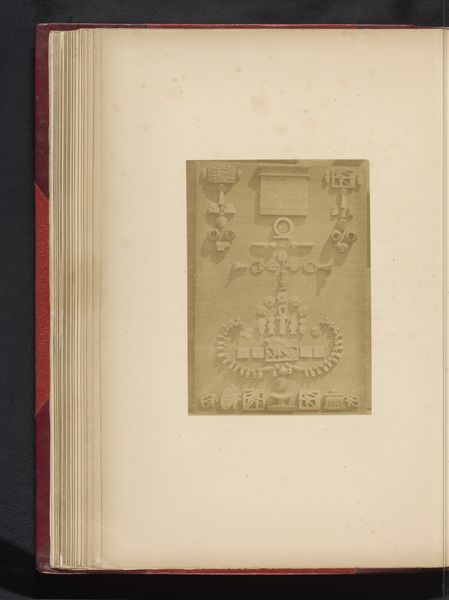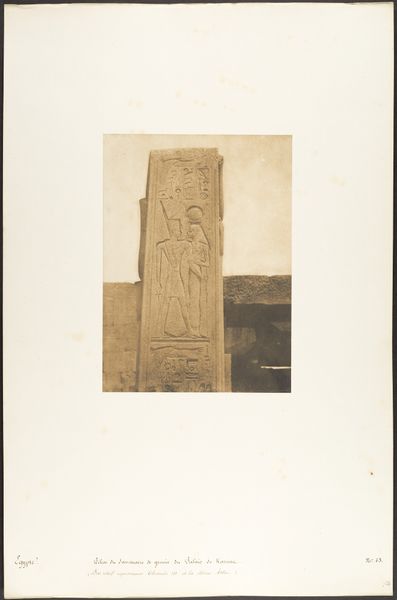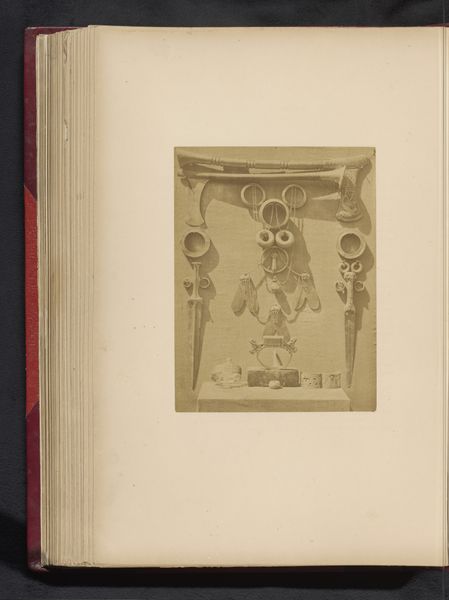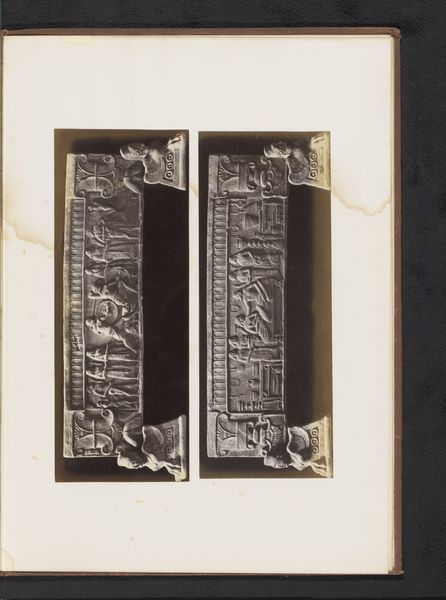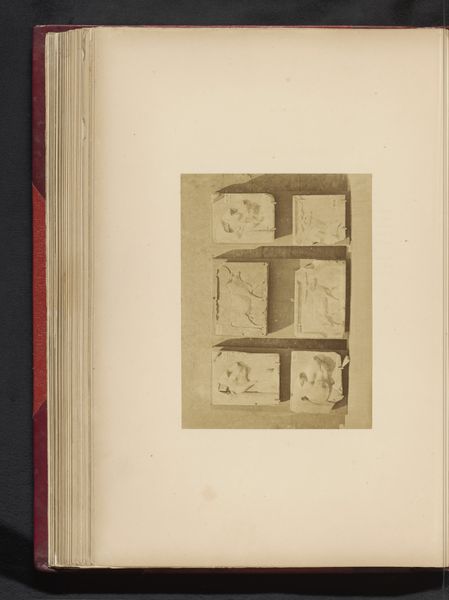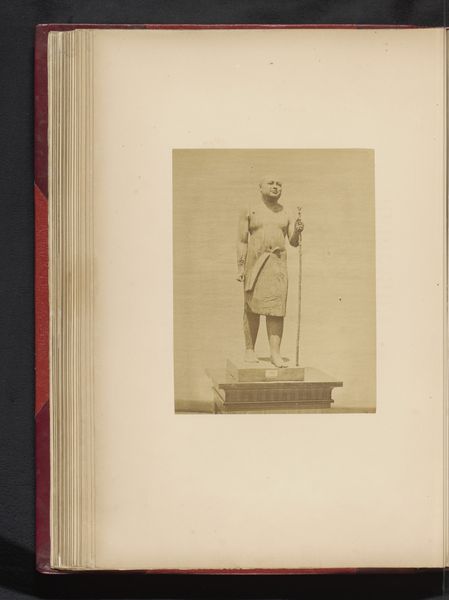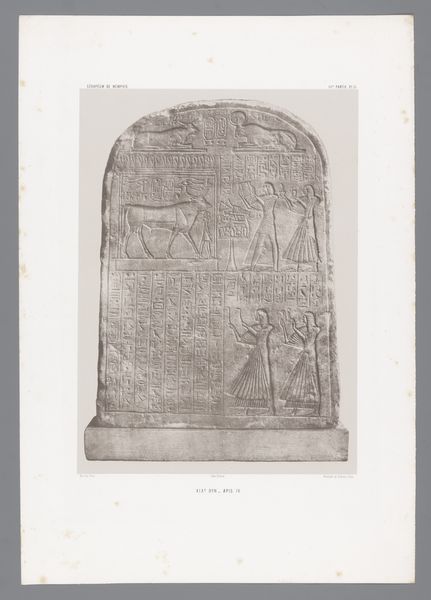
print, relief, photography, albumen-print
# print
#
relief
#
ancient-egyptian-art
#
photography
#
coloured pencil
#
ancient-mediterranean
#
history-painting
#
albumen-print
Dimensions: height 241 mm, width 170 mm
Copyright: Rijks Museum: Open Domain
Editor: So, this is "Stele in het Boulaq Museum in Caïro, Egypte," a photograph of a relief, taken before 1871 by Hippolyte Délié. It's striking how much detail Délié captured, even with the challenges of early photography. There's an almost haunting stillness about it, a weight of history pressing down. What story do you think it's telling, as far as you can tell? Curator: Oh, what a delicious question! Immediately, my mind is swept away to the sands of time, the scent of papyrus and mystery. Don't you just want to decipher every glyph? I see a formal presentation, an audience before a king, maybe even a god. But notice how the light catches the carving, revealing not just form, but feeling. It's more than documentation, it's an echo. What do you think the symmetry does? Editor: I think the symmetry lends it this incredible sense of order, reflecting the values of ancient Egyptian society. Almost like visual stability. Is that what you’re seeing? Curator: Precisely! That balance, that composure is such a contrast with the drama those hieroglyphs surely narrate. Look at those repeated figures at the bottom. They must be paying respect or presenting tribute. I wonder what it was like to stand before the real object, not the captured image. Does imagining the original add meaning to your interpretation, do you think? Editor: Absolutely! Picturing the actual stele heightens my appreciation for the scale and permanence of it. Understanding this photograph isn't just about the image, but connecting with an ancient culture. Curator: Exactly. Each time we see an ancient object, our minds open a new path of curiosity and it reminds us of the ever going and continuing story of humans, and where we may one day wind up, remembered in our own way as well. It's why art, ancient or modern, holds such profound power.
Comments
No comments
Be the first to comment and join the conversation on the ultimate creative platform.
